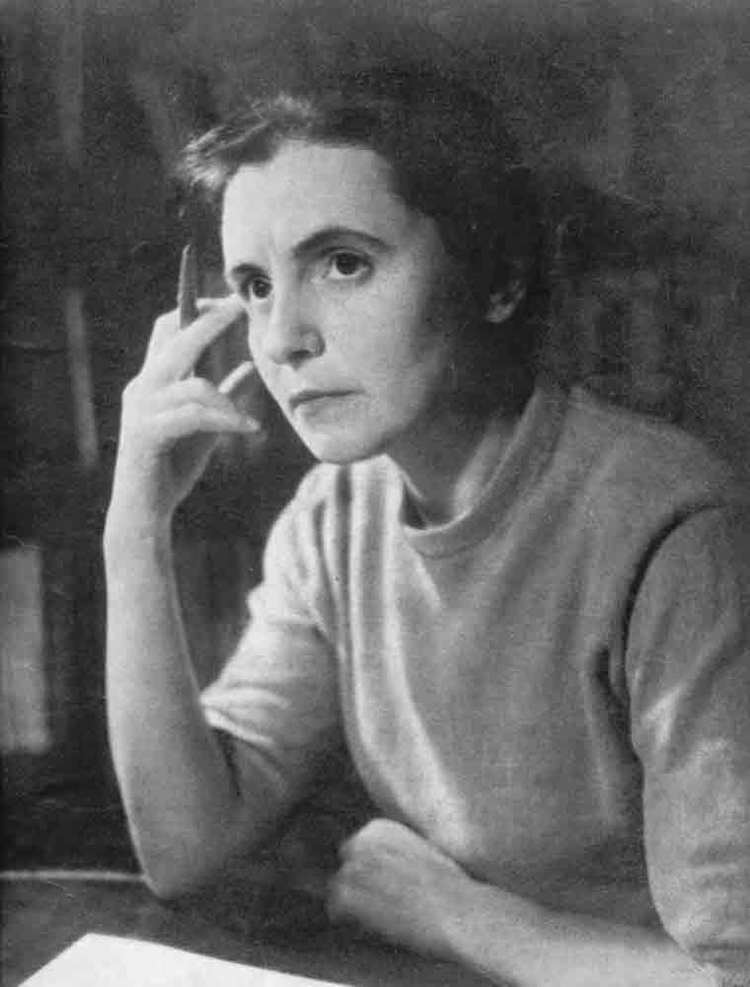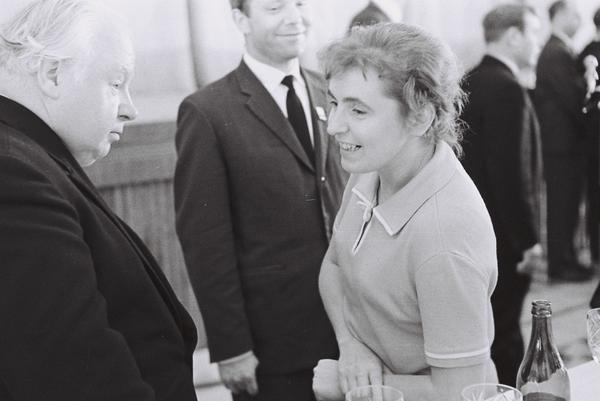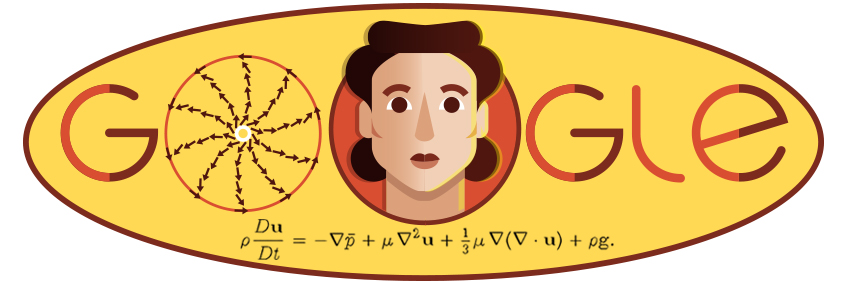Olga Ladyzhenskaya is undoubtedly one of the greatest mathematicians of the modern era. She is renowned not just because of her mathematical abilities but for being able to overcome challenges on her way to the top.
Truth be told, her life story is an inspiration to many as she was able to breach barriers and overcome hurdles to make good of her dreams. Despite being so inspirational, not many people have heard about Olga Ladyzhenskaya. This is why we put together this post to tell you all about her.
Biography of Olga Ladyzhenskaya
Early Life
Olga Ladyzhenskaya was born Olga Alexandrovna Ladyzhenskaya on March 7, 1922, to the family of a mathematics teacher. Her father was Aleksandr Ivanovich Ladyzhenskii, a descendant of Russian nobility while her mother who was from Estonia was Ann Mikhailovna. Olga was born in Kologriv, a land surrounded by wild forests and very close to the beautiful rive, Unzla.
Olga’s mother was a devout and hardworking housewife who managed the home and cared for her family. This family was blessed with three daughters with Olga as the youngest which explains why she was so close to her father. Her relationship with her father is probably the catalyst for her love for mathematics.
Olga’s father began teaching mathematics to his daughters during the summer of 1930. He began with explanations of the basics of geometry after which he would formulate a theorem expecting his daughters to solve it. From her tender age, it was clear that Olga had a strong talent for logic. She loved discussing mathematics with her father and even solved calculus with him like they were equals.
Her grandfather was the famous Gennady Ladyzhensky, one of the greatest painters of his time. It is said that Olga kept his paintings all her life with some of the landscapes of the beautiful Unzla River. The home Olga grew up in was filled with all manner of books including those on fine art and history.
Teenage Years
It is very easy to assume that because of her quiet environment, it must have been easy to groom her gift for mathematics. This is quite distant from the truth even though it is a story that could only be narrated when the Russian communist rule ended. At the time Olga was growing up, intellectuals of Russian nobility found things pretty difficult. A lot was in short supply including paper, food, and clothes.
This was not a deterrent for her father to inspire his young daughters and pupils to study hard. While Olga’s sisters were expelled from school and prevented from continuing their education, she was given the privilege of continuing. Despite this fact, she had major issues with education considering the fact that she was from an enemy nation.
By the time Olga was 15-years-old which was around 1937, the Stalinist authorities arrested her father. He was consequently executed without any trial. According to Alexander Solschenizyn, in his epic recalls that Olga’s father refused to hide away even though he warned ahead of time by a peasant. He stated that he instead stayed on with his work as his belief was that his students were dependent on him.
Also See: Keanu Reeves – Biography of the Most Humble Actor in Hollywood
Death of Her Father
The belief is that Olga’s father died in a Narondny Kommissariat Vnutrennikh Del (NKVD) torture chamber. This should be between the 23rd and 30th of October, 1937. He was just one of the many other excellent teachers that were killed in the same chamber.
The NKVD is regarded as the forerunner of the KGB. It is also important to state that all the teachers that died at their hands were in 1956 fully exonerated. During this period, millions of people suspected to be enemies of Stalin were killed. This was done to keep him unchallenged until his death as the Soviet leader.
In fact, men from the well-off noble and old Ladyzhenskii family who were yet to leave Russia at the time all disappeared in the early 1940s. The tragedy really affected Olga’s family as her mother and siblings had to do craftwork, make dresses, soap, and shoes just to survive.
After secondary school and into teaching
Departure from Leningrad
Olga graduated from secondary school in 1939 with very high scores. Despite this, she was still not allowed to enroll in the Leningrad State University because her father was still considered “an enemy of the state.” Instead, Olga was allowed to enroll in the Pokrovski Teachers’ Training College. It is amazing that she was allowed to enroll based on her word alone since her academic documents were still being held by Leningrad.
Another probable reason why she was allowed to enroll was the change in State policies during the war. Olga had to leave Leningrad when the Second World War began. First, she moves to Gorodets, where she offered her services to an orphanage as a teacher. After this, she moved with her elder sister and mother back to Kologriv.
Here she offered her services as a mathematics teacher in the same secondary school where her father taught. She followed her father’s footsteps, teaching at the school and at home without pay.
University Life
Olga got enrolled in Moscow State University (MGU) in 1943. This was with the influence of one of her pupil’s mothers. The woman pressed on the rector of the university to invite Olga to the institution. It was quite difficult for Olga to leave the school where she taught as there were several battles with the authorities of the school where she taught.
Being enrolled in the MGU was a huge blessing for Olga as her love for mathematics soared very high. Soon, she was awarded a laborer’s ration card and a Stalin stipend. Without both, she would definitely have found it really difficult to survive. It was at MGU she first studied number theory, algebra, and partial differential equations.
Because of Petrovsky’s influence as well as a book written by Courant and Hilbert, she became more interested in the theory of partial differential equations. Olga was clearly very talented, which is why the authorities overlooked her frequent absences at lectures to attend research seminars.
Olga organized a seminar with the aim of studying the theory of partial differential equations in her fourth year. She persuaded one of Petrovsky’s students, Myshkis, to help her speak to his teacher to be the chair at the seminar. Petrovksy did not just attend the seminar all through the year, he also answered questions and expressed his opinion on several topics.
Post College
Olga returned to Leningrad in 1947 after she graduated from MGU because of family circumstances. To this end, on recommendation from MGU, Olga began a postgraduate program at the Leningrad State University. It was at this time she began her long-term friendship with Smirnov.
Smirnov was in charge of different branches of mathematics, hydrodynamics, aerodynamics, and seismology. It was also at this time that Olga was influenced to dive into the study of mathematical physics. In the same year, she got married to Andrei Alexevich Kiselev, who was a specialist in the history of mathematics and the number theory.
Their wedding didn’t last for too long because of a conflict of interest. Olga wanted to devote her whole life to the study of mathematics while Andrei wanted children. To Olga, children may have hindered her from achieving her aim and so she remained single she died.
Olga made a defense of her doctoral dissertation in 1949. The study focused on “the development of finite difference methods for linear and quasilinear hyperbolic systems of partial differential equations.” The study was supervised by Sobolev even though actually, Smirnov supervised the study. Her study aimed at proving the solubility of initial-boundary and boundary problems.
Olga Ladyzhenskaya’s mathematical accomplishments
She published her first book “Mixed Problems for a Hyperbolic Equation” in 1953. In the book, she made use of the finite difference method in proving theoretical results, especially the solvability of “initial boundary-value problems for general second-order hyperbolic equations.”
By the next year, Olga was made a teacher at LSU and also a researcher with the Steklov Mathematical Institute at the Academy of Sciences of the USSR. She continued achieving great results in the 1960s through her research especially with respect to parabolic, linear and quasilinear elliptic, and hyperbolic partial differential equations.
Most of the papers she wrote together with Nina Ural’tseva focused on investigating quasilinear elliptic and parabolic equations of the second order. Her work on partial differential equations contributed to most of her fame.
Olga is majorly known for solving Hilbert’s nineteenth problem which was also on partial differential equations. This is besides her work that focused on fluid dynamics. She was the first person to present the world with evidence showing the conjunction of the finite difference method to solve the Navier-Stokes’ equations.
Olga Ladyzhenskaya’s Awards
The mathematician was the recipient of several awards during her lifetime. Some of them include:
- The Order of Friendship bestowed on her in 1999
- The P.L. Chebyshev Prize shared with Nina Ural’steva for their work on linear and quasi linear equations
- The Lomonosov Gold Medal for achievements in mathematical physics.
Major facts about Olga Ladyzhenskaya
We have told you a lot about Olga, however, in this section, we summarize a few facts you should know.
- Olga published more than 250 papers all through her life despite the different challenges she faced.
- Family ties almost kept her from studying. This is because her father was regarded as an enemy of the state. Despite this, her relationship with her father sparked an interest in studying mathematics. She developed this zest at a very young age.
- Olga had to overcome the challenges of political unrest to pursue her research. In fact, once she was denied the opportunity of enrolling in a University because of political unrest. Her Doctoral Thesis was not published until Joseph Stalin died in 1953 even though she had completed it in 1951. The unrest also hindered her from attending several academic seminars and events.
- Olga’s work is still relevant to date, especially in fluid dynamics. They are impactful in weather forecasting, oceanography, aerodynamics, and cardiovascular science.
- Olga Ladyzhenskaya was still a lover of arts even though her love for mathematics was unrivaled. Until she died, she still kept several pieces of artwork including those of her father.
- Olga passed on in her sleep on January 12, 2004, in Russia two days prior to a trip to Florida. She would have been 82-years-old had she not died that year.














